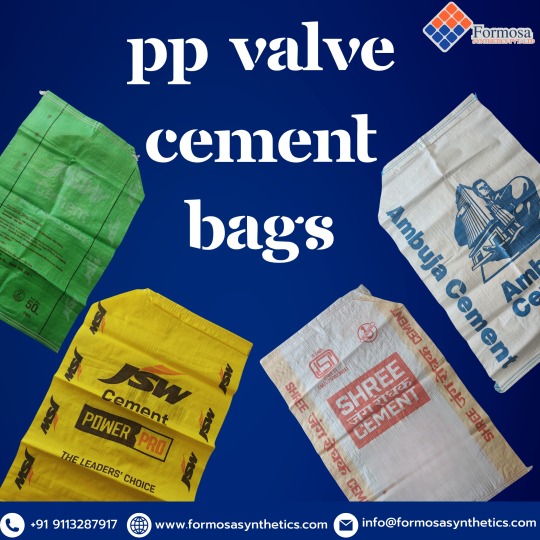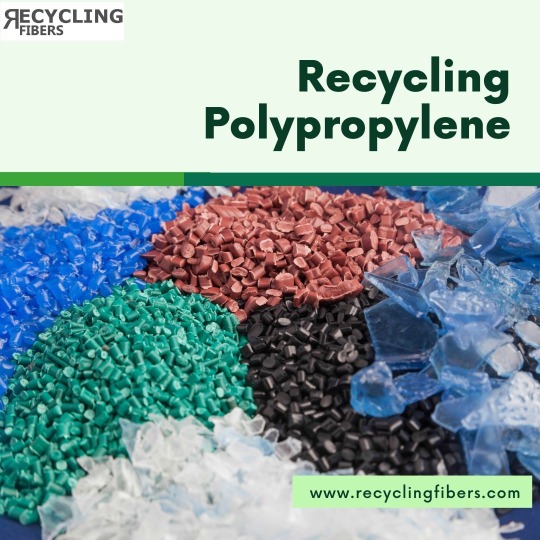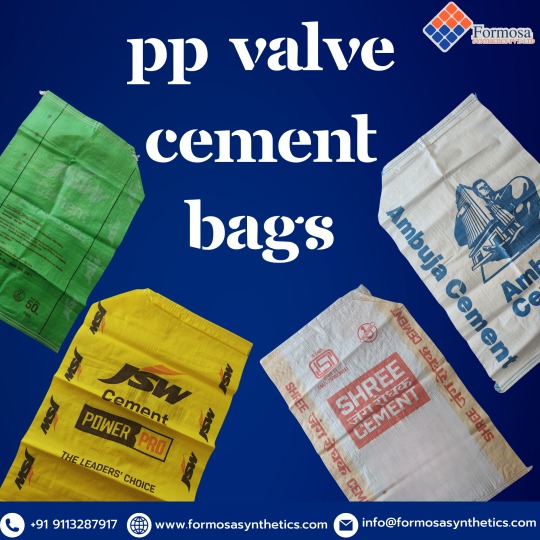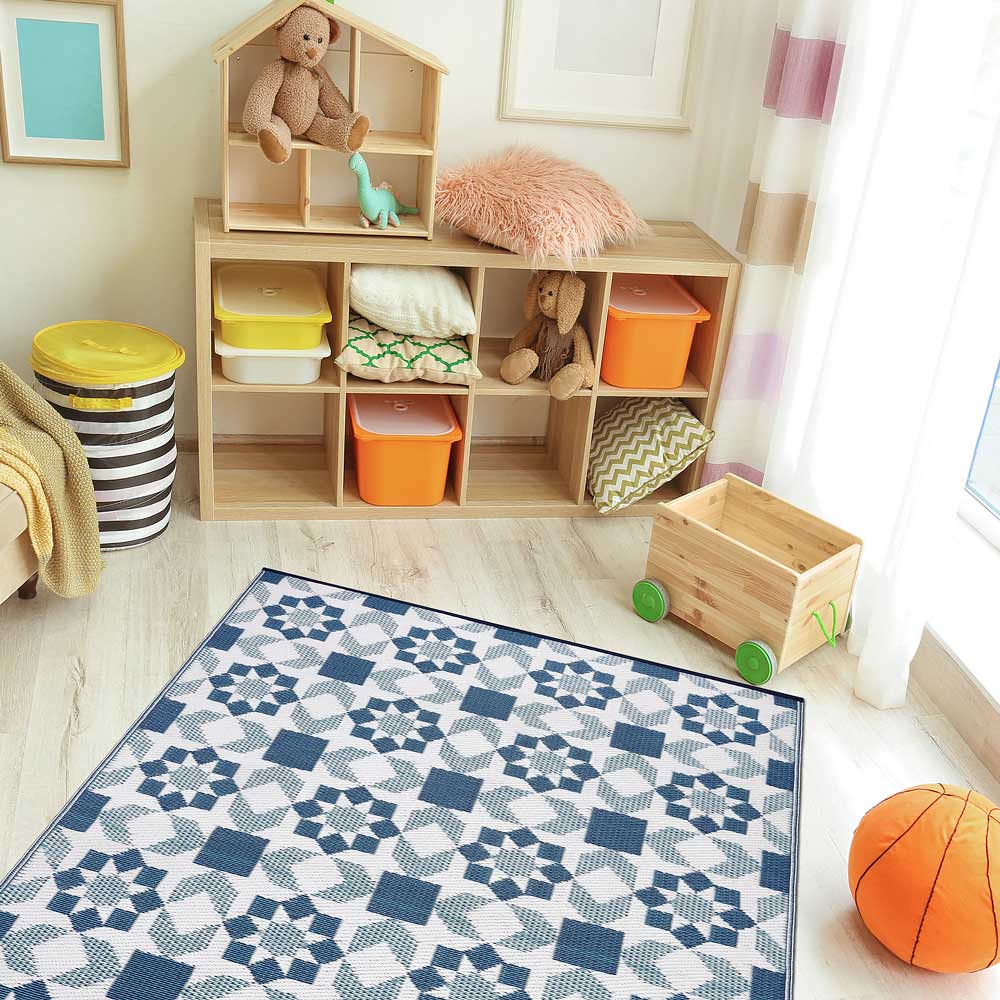#recycled polypropylene
Text
How can we reduce Textile Waste

There are many ways to combat textiles waste and reduce the impact on the environment, like use cotton that is still good but not as soft as before. This will help to reduce textile waste. Try on your clothes before you buy them to see if the fabric is perfect or not. This will help to reduce textile waste too. Know more about Textile waste by Recycling fibers.
0 notes
Photo

Fungi makes a meal of hard-to-recycle plastic
Polypropylene, a hard-to-recycle plastic, has successfully been biodegraded by two strains of fungi in a new experiment led by researchers at the University of Sydney.
Polypropylene has long been recycling's head scratching riddle. A common plastic used for a wide variety of products from packaging and toys to furnishing and fashion, it accounts for roughly 28% of the world's plastic waste, but only 1% of it is recycled.
Now, thanks to the efforts of researchers at the University of Sydney, the recalcitrant polymer may have met its match. Published April 14 in npj Materials Degradation, two common strains of fungi were used to successfully biodegrade polypropylene in a laboratory experiment.
Typically found in soil and plants, Aspergillus terreus and Engyodontium album were able to break down polypropylene after it had been pre-treated with either UV light or heat, reducing the plastic by 21% over 30 days of incubation, and by 25%–27% over 90 days.
Read more.
#Materials Science#Science#Fungi#Plastics#Polymers#Recycling#Polypropylene#Biodegradable#University of Sydney
64 notes
·
View notes
Quote
In 2018, Starbucks released a “straw-less lid,” as part of its sustainability drive, however this lid contained more plastic than the old lid and straw combination. The company didn’t dispute this, but claimed that it is made from polypropylene, a commonly-accepted recyclable plastic that “can be captured in recycling infrastructure.” Critics were quick to point out that only 9% of the world’s plastic is recycled, so the company shouldn’t assume all the lids would be recycled. Further, the US exports about one-third of its recycling to developing countries, so it is simply passing its responsibility to poorer countries.
Deena Robinson, ‘10 Companies Called Out For Greenwashing’, Earth.org
3 notes
·
View notes
Text

#CementBags#ConstructionIndustry#Polypropylene#PPPlastic#ManufacturingProcess#Recycling#Sustainability#Customization#EcoFriendly#PackagingSolutions#MaterialSourcing#SupplyChain#EnvironmentalConservation#Innovation#Reuse#ReduceWaste#CreativeReuse#QualityControl#Durability#IndustryStandards
0 notes
Text
How Recycled PP Granules Contribute to a Greener Future
Introduction:
Setting the stage: the urgency of addressing plastic pollution and climate change.
Introducing recycled PP granules as a sustainable solution.
Preview of the ways recycled PP granules contribute to environmental conservation.

1. Reducing Plastic Waste:
Exploring the magnitude of the plastic waste problem.
How recycled PP granules divert plastic waste from landfills and oceans.
Statistics on the environmental impact of reducing plastic waste through recycling.
2. Energy Conservation and Carbon Footprint Reduction:
Comparing the energy consumption of recycling PP versus producing virgin plastic.
Carbon emissions saved by using recycled PP granules instead of virgin materials.
Studies and research supporting the environmental benefits of recycled PP.
3. Preservation of Natural Resources:
The significance of conserving finite resources like oil and natural gas.
Explaining how recycled PP granules help in resource conservation.
Quantifying the amount of resources saved through PP recycling.
4. Mitigating Pollution and Environmental Harm:
Addressing the ecological consequences of plastic pollution.
How recycled PP granules contribute to cleaner air, water, and soil.
Case studies or examples demonstrating the positive impact of PP recycling on the environment.
5. Promoting Circular Economy Principles:
Definition of circular economy and its importance in sustainability.
Role of recycled PP granules in closing the loop of the plastic lifecycle.
Collaborative efforts between manufacturers, consumers, and policymakers in promoting circularity.
6. Supporting Sustainable Consumption and Production:
Aligning recycled PP granules with sustainable development goals.
Encouraging businesses and consumers to prioritize recycled materials.
Highlighting the market demand for eco-friendly products and materials.
7. Innovation and Future Prospects:
Emerging technologies and innovations in PP recycling.
Potential advancements to further enhance the sustainability of recycled PP granules.
The role of research and development in driving the evolution of recycling practices.
Conclusion:
Recap of the environmental benefits of recycled PP granules.
Call to action for individuals, businesses, and governments to support PP recycling initiatives.
Optimistic outlook for a greener future through continued adoption of recycled materials.
This outline should serve as a comprehensive guide for creating a blog post that highlights how recycled PP granules contribute to environmental sustainability and a greener future.
#Plastic Recycling Industry In India#PP Woven Sack Bag Manufacturer#Polypropylene Packaging Bags#PP Woven Fabric Manufacturers In India
0 notes
Text
راهنمای جامع کامپاند پلی پروپیلن: از انتخاب مواد تا کاربردهای نهایی
پلی پروپیلن (PP) یکی از پرکاربردترین پلیمرها در جهان است که به دلیل خواص منحصر به فرد خود، در طیف وسیعی از صنایع مورد استفاده قرار می گیرد. کامپاند پلی پروپیلن، نوع اصلاح شده ای از PP است که با افزودنی های مختلف، خواص آن ارتقا یافته و برای کاربردهای خاص بهینه شده است.
مزایای استفاده از کامپاند پلی پروپیلن:
تنوع: تنوع کامپاندهای PP بسیار زیاد است و می توان آنها را برای کاربردهای مختلف، از جمله صنعت خودروسازی، نساجی، لوازم خانگی و بسته بندی، به کار برد.
عملکرد: کامپاندهای PP می توانند خواص مکانیکی، شیمیایی و حرارتی PP را به طور قابل توجهی ارتقا دهند.
قیمت: استفاده از کامپاندهای PP می تواند به کاهش هزینه های تولید، ضایعات و زمان تولید کمک کند.
قابلیت پردازش: کامپاندهای PP به راحتی پردازش شده و می توان از آنها در فرآیندهای مختلف تولید استفاده کرد.
انتخاب کامپاند مناسب:
انتخاب کامپاند مناسب برای هر کاربرد، به عوامل مختلفی مانند خواص مورد نیاز، فرآیند تولید و الزامات اقتصادی بستگی دارد. در این راهنمای جامع، به شما در انتخاب بهترین کامپاند برای نیازهایتان کمک خواهیم کرد.
مراحل انتخاب کامپاند:
شناسایی خواص مورد نیاز:
در ابتدا باید خواص مورد نیاز برای کاربردتان را مشخص کنید. این خواص می تواند شامل استحکام مکانیکی، مقاومت شیمیایی، مقاومت حرارتی، رنگ و سایر ویژگی های خاص باشد.
انتخاب نوع کامپاند:
بر اساس خواص مورد نیاز، می توانید نوع کامپاند مناسب را انتخاب کنید. به عنوان مثال، اگر به دنبال کامپاندی با استحکام مکانیکی بالا هستید، باید از کامپاندهای PP تقویت شده با الیاف استفاده کنید.
انتخاب تولیدکننده:
تولیدکنندگان مختلفی در سراسر جهان، کامپاندهای PP را تولید می کنند. هر تولیدکننده، تنوع کامپاندهای خاص خود را ارائه می دهد.
بررسی قیمت و موجودی:
قیمت کامپاندها به نوع کامپاند، تولیدکننده و حجم سفارش بستگی دارد. قبل از انتخاب نهایی، قیمت و موجودی کامپاند مورد نظرتان را بررسی کنید.
کاربردهای کامپاند پلی پروپیلن:
کامپاندهای PP در طیف وسیعی از صنایع مورد استفاده قرار می گیرند. برخی از کاربردهای رایج این کامپاندها عبارتند از:
صنعت خودروسازی:
سپر، داشبورد، روکش صندلی، قطعات داخلی و خارجی خودرو
صنعت نساجی:
الیاف، پارچه های بافته شده و نبافته، فرش
صنعت لوازم خانگی:
لوازم برقی، ظروف پلاستیکی، اسباب بازی
صنعت بسته بندی:
بطری، فیلم، ظروف
معرفی و مقایسه تولیدکنندگان برتر کامپاند:
در این بخش، به معرفی برخی از تولیدکنندگان برتر کامپاند پلی پروپیلن در جهان می پردازیم و محصولات و خدمات آنها را مقایسه می کنیم.
نکات کلیدی در فرآیند خرید و استفاده از کامپاند:
انتخاب تولیدکننده مناسب:
برای خرید کامپاند، باید یک تولید کننده قابل اعتماد پیدا کنید که سابقه و تخصص کافی در تولید و عرضه کامپاندهای PP داشته باشد.
انبارداری و حمل و نقل:
کامپاندهای PP باید در شرایط مناسب انبارداری و حمل و نقل شوند تا از کیفیت آنها محافظت شود.
استفاده از کامپاند:
برای استفاده از کامپاندهای PP، باید دستورالعمل های سازنده را به دقت مطالعه و اجرا کنید.
نتیجه:
کامپاندهای پلی پروپیلن، مواد اولیه ای با ارزش هستند که می توانند به ارتقای کیفیت محصولات و افزایش راندمان تولید در صنایع مختلف کمک کنند. با انتخاب و استفاده از کامپاند مناسب، می توانید به مزایای متعددی دست پیدا کنید.
برای خرید کامپاند پلی پروپیلن با کیفیت بالا و قیمت مناسب، می توانید به وب سایت شرکت اکسیر پلیمر مراجعه کنید:
#pp compounds#pp compound#polypropylene compounds#recycled pp#exirpolymer#automotive#کامپاند pp#کامپاند پلی پروپیلن
1 note
·
View note
Text
Suitable to use indoors and outdoors, this outdoor area rug is produce to meet the demand for a multi-purpose, easy-care, stain-resistant and reversible rug. It is soft underfoot, mold, and mildew resistant which means it will stay fresher for a more extended period of time.
0 notes
Text
Post Industrial (PIR) and Post Consumer (PCR)
Post Industrial (PIR) and Post Consumer (PCR) are two types of recycled plastics.
Post-Industrial Polypropylene Material: Plastic that was never used by consumers is referred to as post-industrial. This extra plastic is a byproduct of production and is produced for a number of different reasons. Some scrap is created when goods are contoured or when manufacturing is altered along a line. Other…

View On WordPress
0 notes
Text
Polypropylene Recycling Market to Witness Healthy Growth with Relatively Higher Demand for Bottles Segment Source, Says MarketsandMarkets™
Polypropylene recycling is recovering polypropylene plastic from used or waste products. Polypropylene is a type of thermoplastic polymer which is used in a wide variety of products, including food packaging, plastic bags, medical supplies, and automotive parts. Polypropylene is strong, durable, and lightweight, making it an ideal choice for many applications. It is also recyclable, so…

View On WordPress
#Plastics Recycling#Plastics Recycling Market#polypropylene bags recycling#polypropylene plastic recycling#polypropylene recycled products#Polypropylene Recycling#polypropylene recycling companies#Polypropylene Recycling Market#Polypropylene Recycling Market Growth#Polypropylene Recycling Market Share#Polypropylene Recycling Market Trend#Polypropylene Recycling Market Forecast#Polypropylene Recycling Sales#Polypropylene Recycling Industry#recycled polypropylene pellets#recycled polypropylene price#recycled pp granules manufacturers
0 notes
Text
What is a polyp? What are the symptoms and treatment methods? 2023
New Post has been published on https://bankakredin.com/what-is-a-polyp-what-are-the-symptoms-and-treatment-methods-2023/
What is a polyp? What are the symptoms and treatment methods? 2023
Polyps , which are frequently mentioned in the medical world , are tumor-like structures that can be seen in many different tissues of the body. Polyps, which can form in the uterus, cervix, intestine, nose and many other places covered with mucous membranes in the body, can grow over time and cause some health problems. Polyps rooted in any layer of the tissue they are formed and pushed outwards in the form of a tumor, sometimes attach to the tissue with a stem and sometimes with a wide base. Although the majority of polyps, which have different types according to their size, rooted tissues and structures, are benign, there are also polyps that may become cancerous. These polyps are evaluated medically and removed with the help of surgical interventions in cases where they are considered risky.
What is a polyp?
Polyps are tumors that develop mostly due to unknown reasons in certain parts of the human body and generally have a small structure. Some have millimeter structures, while others can reach several centimeters in size. They are generally benign formations and the tendency to become cancerous is seen in a small number of them. Most people have polyps in certain areas of their body; but they are usually not noticed as they do not cause any health problems and do not cause discomfort to the person. The most common areas of polyps in the body are the uterus and cervix, vocal cords, intestines and gall bladder. Although polyps formed in the uterus can prevent pregnancy, they are usually detected during examinations to investigate the cause of infertility. Polyps formed in places such as the intestine, vocal cords and gall bladder, As their size grows, it leads to the formation of some symptoms in the person and these symptoms are detected later. Since polyps that do not cause any serious problems can heal on their own, they can be kept under control with follow-up. In a few of them, problems such as detecting the risk of cancer, preventing pregnancy, and being large in size can be seen. These polyps are removed with the help of surgical operations.
What are the symptoms of polyps?
Polyps may occur due to unknown reasons and disappear without intervention. Especially small polyps do not cause serious health problems in most individuals. For this reason, they can only be detected during research for a different reason and usually do not need to be removed. However, in some cases, they can cause discomfort that can negatively affect a person’s daily life. It manifests itself through symptoms, especially in cases where their size is large. The severity of these symptoms varies according to the area where the polyps occur, the number and size of the polyps formed.
In uterine and cervical polyps;
irregular bleeding
pain during sexual intercourse
Excessive menstrual bleeding
Prolonged menstrual bleeding
Symptoms such as inability to conceive (infertility) are among the most common symptoms.
Polyps, which are mostly seen in women in the uterus and cervix regions, can also occur in different tissues and organs of the body, as mentioned above. For example, the formation of polyps in the gallbladder can be manifested by nausea and vomiting, abdominal pain, jaundice and changes in stool appearance, and can be confused with other gallbladder diseases in ultrasonic examinations. Polyps in the vocal cords may present with abnormalities and changes in the vocal structure, while polyps in the intestine may present with symptoms such as irregular functioning of the digestive system, recurrent diarrhea and blood in the stool.
What are the causes of polyps?
Although the reasons for the formation of polyps are not known exactly, there are some situations that are thought to increase the risk of polyps. It is thought that excess estrogen in the circulation plays a triggering role in endometrial polyp types formed in the uterus.
At the same time, it has been determined that the drug called tamoxifen, which is used in the treatment of breast cancer, increases the risk of polyps in the endometrial layer. It is known that polyps formed in the vocal cords are associated with the use of alcohol, cigarettes and other tobacco products, allergies, reflux and exposure to chemical substances.
Stress, advanced age, sedentary life, unbalanced diet, being overweight and frequent alcohol use increase the risk of polyp formation in the intestine. Apart from these, genetic predisposition for all types of polyps and a family history of cancer, It is in the first place among the reasons that pave the way for the formation of polyps. However, in the absence of all these triggering factors, polyps can occur in different parts of the body.
What are the types of polyps?
Polyps are named according to the regions where they occur and are divided into different types. The most common types of polyps are:
Endometrial polyp: Polyp formation in the uterus is a very common condition, especially in the postmenopausal period. Polyps originating from the uterus or cervix, also called endometrial polyps, are usually manifested by the bleeding problem.
Gallbladder polyps: The formation of polyps in the gallbladder is often confused with other diseases such as gallstones and biliary sludge. Gallbladder removal may be necessary if the polyp is large in size and causes biliary obstruction.
Vocal cord polyps: Some individuals with problems such as bifurcation and thickness in their voices have polyps and nodules in the vocal cords. It can be treated with the help of drugs and surgical interventions.
Intestinal polyps: The formation of polyps, especially in the large intestine, can lead to negativities such as recurrent diarrhea, changes in stool appearance, and blood in the stool. In case of severe symptoms, these polyps should be removed with the help of surgical interventions.
How is polyp diagnosed?
Diagnosis of polyps is not always made depending on the tests to be performed as a result of the symptoms that raise the suspicion of polyps. Polyps, most of which are asymptomatic, are commonly detected incidentally during investigations for different diseases, routine imaging procedures and examinations. Some polyps do not show themselves during ultrasonic examinations if they have a very small structure. If they start to show symptoms, they can be detected as a result of laboratory examinations by taking a sample from the tissue.
Suspicion of endometrial polyps usually arises due to excessive menstrual bleeding and polyps can be seen with the help of ultrasonic examinations and hysteroscopy. Polyps with millimeter dimensions, It can be diagnosed by pathological examination as a result of finding polyp markers during these imaging procedures. Intestinal polyps are detected in colonoscopy examinations and, if necessary, a biopsy is taken from the suspicious area and sent for pathological examination. Polyps formed in the vocal cords can be diagnosed by endoscopic methods.
What are the treatment methods for polyps?
Polyp treatment; It is determined by specialist physicians by evaluating according to the type of polyps, the type of organ and tissue they form, their number and size, whether they are benign or malignant. Polyps, most of which are benign and not likely to turn into cancer, do not need to be removed if they do not cause any adverse effects.
Although some natural methods known as polyp cure are known among the people, such applications should be preferred as a support, not a complete treatment, and a physician should be consulted before applying. Polyps that do not heal despite the follow-up, that are suspected to be cancerous, that are found to be malignant as a result of the examination, that prevent pregnancy, or that cause continuous intestinal problems if they are in the intestine should be removed.
Removal of polyps with the help of surgical operation is performed with the help of a simple operation, also called polypectomy. The location of the polyps is determined exactly and the polyps are removed with the help of the necessary surgical equipment, accompanied by the appropriate imaging technique for the region.
This procedure is performed under general or local anesthesia, depending on the preference of the physician and the area being worked on. It is a short operation that takes about 20-30 minutes. It usually does not require hospitalization and patients can be discharged on the same day and return to their work and daily life the next day.
In summary, the most important point in the treatment of polyps, regardless of the area where they occur, is to investigate whether the polyps are malignant and to remove them immediately if they are found to be risky.
If you are experiencing one or more of the symptoms that may be caused by the polyp, you should immediately apply to a health institution and be examined and have the necessary tests done. If you have been diagnosed with a polyp, you should not neglect to follow up the polyp or polyps in your body with regular check-ups. Otherwise, your disease level will worsen and your treatment period will be prolonged.
polyp,are polyps cancer,are polyps common,are polypeptides proteins,are polypropylene rugs safe,are polyps painful,are polypeptides lipids,are polyps normal,are polyphenols good for you,are polyps tumors,are polypeptides polymers,can polyps cause pain,can polyps be cancerous,can polyps cause constipation,can polyps cause diarrhea,can polyps bleed,can polyps go away,can polypropylene be recycled,can polyps cause blood in stool,can polyps turn into cancer,
#are polypeptides lipids#are polypeptides polymers#are polypeptides proteins#are polyphenols good for you#are polypropylene rugs safe#are polyps cancer#are polyps common#are polyps normal#are polyps painful#are polyps tumors#can polypropylene be recycled#can polyps be cancerous#can polyps bleed#can polyps cause blood in stool#can polyps cause constipation#can polyps cause diarrhea#can polyps cause pain#can polyps go away#can polyps turn into cancer#polyp
0 notes
Text
What are the benefits of Recycling Polypropylene

Recycling polypropylene has many benefits firstly, it provides environmental benefits, such as reducing greenhouse gas emissions, saving energy and conserving resources. Polypropylene can be recycled and made into new products, which helps to reduce waste and conserve resources.
0 notes
Photo

New process could enable more efficient plastics recycling
Cobalt-based catalysts could be used to turn mixed plastic waste into fuel, new plastics, and other products.
The accumulation of plastic waste in the oceans, soil, and even in our bodies is one of the major pollution issues of modern times, with over 5 billion tons disposed of so far. Despite major efforts to recycle plastic products, actually making use of that motley mix of materials has remained a challenging issue.
A key problem is that plastics come in so many different varieties, and chemical processes for breaking them down into a form that can be reused in some way tend to be very specific to each type of plastic. Sorting the hodgepodge of waste material, from soda bottles to detergent jugs to plastic toys, is impractical at large scale. Today, much of the plastic material gathered through recycling programs ends up in landfills anyway. Surely there’s a better way.
According to new research from MIT and elsewhere, it appears there may indeed be a much better way. A chemical process using a catalyst based on cobalt has been found to be very effective at breaking down a variety of plastics, such as polyethylene (PET) and polypropylene (PP), the two most widely produced forms of plastic, into a single product, propane. Propane can then be used as a fuel for stoves, heaters, and vehicles, or as a feedstock for the production of a wide variety of products — including new plastics, thus potentially providing at least a partial closed-loop recycling system.
Read more.
#Materials Science#Science#Recycling#Plastics#Polymers#Environment#Polyethylene#Polypropylene#MIT#Catalysts#Cobalt#Propane#Zeolites#Nanoparticles#Nanotechnology#Reactions
63 notes
·
View notes
Text
Just like the Asian and European markets, the Recycled Polypropylene Price stepped down in North American markets too in this quarter. Due to the fact that downstream businesses preferred PP to this product for their manufacturing activities, they were only showing a passing interest in it.
0 notes
Text
Cement Bag Material: Why Polypropylene (PP) is the Preferred Choice

Introduction
Cement bags are essential in the construction industry, facilitating the safe transportation of cement. Among the materials used, Polypropylene (PP) plastic stands out for its exceptional advantages. Its strength and durability ensure the integrity of the cement during handling and transportation. Impermeable to moisture, PP plastic shields the cement from water damage, crucial in humid climates. Lightweight and weatherproof, it maintains quality in various conditions. Affordable and customizable, it offers cost-effective packaging solutions while being eco-friendly and recyclable, aligning with sustainability goals.
Cement Bag Material: Polypropylene (PP) Plastic
Availability and Reliability
Strength and Durability
Impermeability to Moisture
Tear Resistance and Chemical Inertness
Weatherproof and Lightweight
Affordability and Customizability
Eco-Friendliness and Recyclability
Where to buy these materials?
Looking for high-quality materials for cement bag manufacturing? Look no further than Formosa Synthetics Pvt. Ltd., As a trusted supplier in the industry, we specialize in providing premium Polypropylene filler masterbatch for cement bag production. Our flagship product is a superior blend of CaCO3 stone powder, PP base resin, and carefully selected additives, ensuring optimum strength, durability, and printability for cement bags. With our commitment to excellence and customer satisfaction, we have become the preferred choice for cement bag manufacturers seeking reliable materials for their production needs.
Whether you’re a cement bag manufacturer, Formosa Synthetics Pvt. Ltd. is your one-stop solution for top-notch PP filler masterbatch. Partner with us today and experience the difference in quality and service. Contact us now to request a quote or inquire about cement bag materials.
How are cement bags manufactured?
Cement bags play a vital role in the construction industry, providing a convenient and durable solution for storing and transporting cement. But have you ever wondered how cement bags are manufactured?
The manufacturing process of cement bags involves several intricate steps to ensure quality and durability. Let’s take a closer look:
PP Yarn Production
Woven PP Fabric Sheet
Coated PP Fabric Film
Printing on PP Bags
Finished Product Cutting and Packing
How can cement bags be recycled?
Recycling cement bags presents an opportunity to reduce waste and embrace sustainable practices. Here are several creative ways to recycle cement bags:
Transform into Shopping Bags
Craft Unique Tote Bags or Pouches
Donate to Art Communities
Utilize as Weed Barriers
Create Planters
Donate to Recycling Centers
What is the procedure for the customization of cement bags?
Customizing cement bags can be a creative and unique way to personalize them for various purposes. Here’s a general procedure for customizing cement bags:
Clean the Cement Bags
Design Planning
Gather Materials
Protect Your Workspace
Apply the Design
Allow Drying Time
Optional: Seal the Design
Evaluate and Touch-Up
Conclusion
cement bags crafted from Polypropylene (PP) plastic stand out as indispensable assets in the construction sector, offering a blend of durability, moisture resistance, and customization capabilities. Their intrinsic strengths ensure the safe and efficient transportation of cement while meeting stringent industry standards. Moreover, PP plastic’s eco-friendly nature and recyclability underscore its contribution to sustainable practices, aligning with environmental conservation efforts. Whether utilized by manufacturers for reliable packaging solutions or repurposed by individuals for creative endeavors, cement bags made from PP plastic exemplify innovation and versatility, driving forward the ethos of responsible manufacturing and consumption in the modern era.
Read More
#CementBags#ConstructionIndustry#Polypropylene#PPPlastic#ManufacturingProcess#Recycling#Sustainability#Customization#EcoFriendly#PackagingSolutions#MaterialSourcing#SupplyChain#EnvironmentalConservation#Innovation#Reuse#ReduceWaste#CreativeReuse#QualityControl#Durability#IndustryStandards
0 notes
Link
Globally woven polypropylene cement sacks are recycled and used to produce low-cost plastic items like buckets, slippers, and mugs. Recycled woven polypropylene cement sacks have not yet been used in India. However, if India improved its handling system and expanded the usage of recovered polymers, it would have greater chances than other countries. In order to lessen their carbon impact or increase sustainability, cement manufacturers could use this to position themselves as sustainable companies. However, considering the costs, businesses could not experience considerable financial savings.
Recycling companies pay scrap collectors INR 2 or 3 per kilogramme for unwashed cement bags. Average recycled polymer costs INR 65-70 per kilogramme (11–13 bags), compared to woven polypropylene cement sacks, which cost INR 40–50 per kilogramme (11–13 bags).
0 notes
